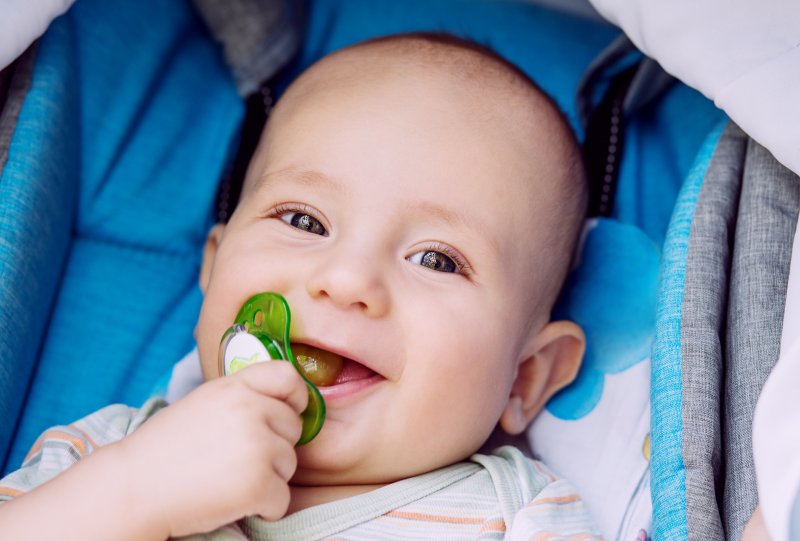
Pacifiers are commonly used by babies who need help self-soothing when upset or scared. These small oral devices offer comfort and can be a relief for parents who are unsure about what they can do to calm their little one down. Unfortunately, prolonged use or attachment to them can create issues as your baby grows older, one of which is tooth development. Read on to learn how to use pacifiers responsibly and safeguard your child against potential oral health problems in the future.
What are Pacifier Teeth?
“Pacifier teeth” is a term used to explain what can happen to a baby’s smile if prolonged pacifier use occurs.
While babies and toddlers tend to reach for it (or their thumb) when upset or uncomfortable, the habitual practice can negatively impact their tooth eruption and alignment if allowed to continue.
This is why pediatric dentists strongly encourage discontinuing the use of pacifiers early on, as doing so can give your child a better chance of avoiding oral health problems in the future.
What Kinds of Oral Development Problems Can Occur with Pacifier Overuse?
As your child grows and their teeth erupt, the force that is placed on the back of the front teeth because of the sucking motion that is used with a pacifier will cause these pearly whites to become crooked or shift forward.
The longer a child sucks on a pacifier or their thumb, the greater the risk of developing:
- An open bite, which is when the front teeth don’t touch, but the back ones do when the mouth closes
- Changes that occur to the roof of the child’s mouth
- Protruding front teeth or those that flare outward
- Crooked teeth
- Poor bite alignment
While not all children develop this problem, those who do are typically toddlers or preschoolers who are allowed to continue with usage.
How to Use Pacifiers Responsibly
If you want your child to avoid serious oral health and development issues, you’ll need to practice responsible pacifier use. This means:
- Avoiding those that have multiple parts or contain liquids inside the bulb, as the solution could leak.
- Observing how your child uses their pacifier. Are they casually placing it in their mouth or sucking vigorously on it?
You might also consider ways to help your child kick their habit. This can include replacing their pacifier with a stuffed animal or toy that offers comfort. You might also try offering a reward when they do not use their pacifier for a designated period (i.e., a few days, one week, etc.). You can also use encouraging words when they choose a different activity or item to help them self-soothe.
Your child doesn’t have to grow up with a misaligned smile that requires years of treatment and intervention. By adopting these tips and educating yourself on the potential problems of pacifier use, you and your child’s dentist can develop a plan to keep their growing teeth safe in the years to come.
About the Author
Dr. Cory Grathwol is a pediatric dentist in Naperville who enjoys spending time with kids. Emphasizing the necessity of preventive care among patients of all ages, he eagerly helps parents who are unaware of the potential issues that can stem from non-nutritive habits like pacifier use and thumb-sucking. He and the team at G&G Pediatric Dentistry and Orthodontics can offer helpful tips to break this habit and better protect a child’s growing smile. If your little one is relying too much on their pacifier or thumb to calm down, contact us at (630) 778-9500 or visit our website.



